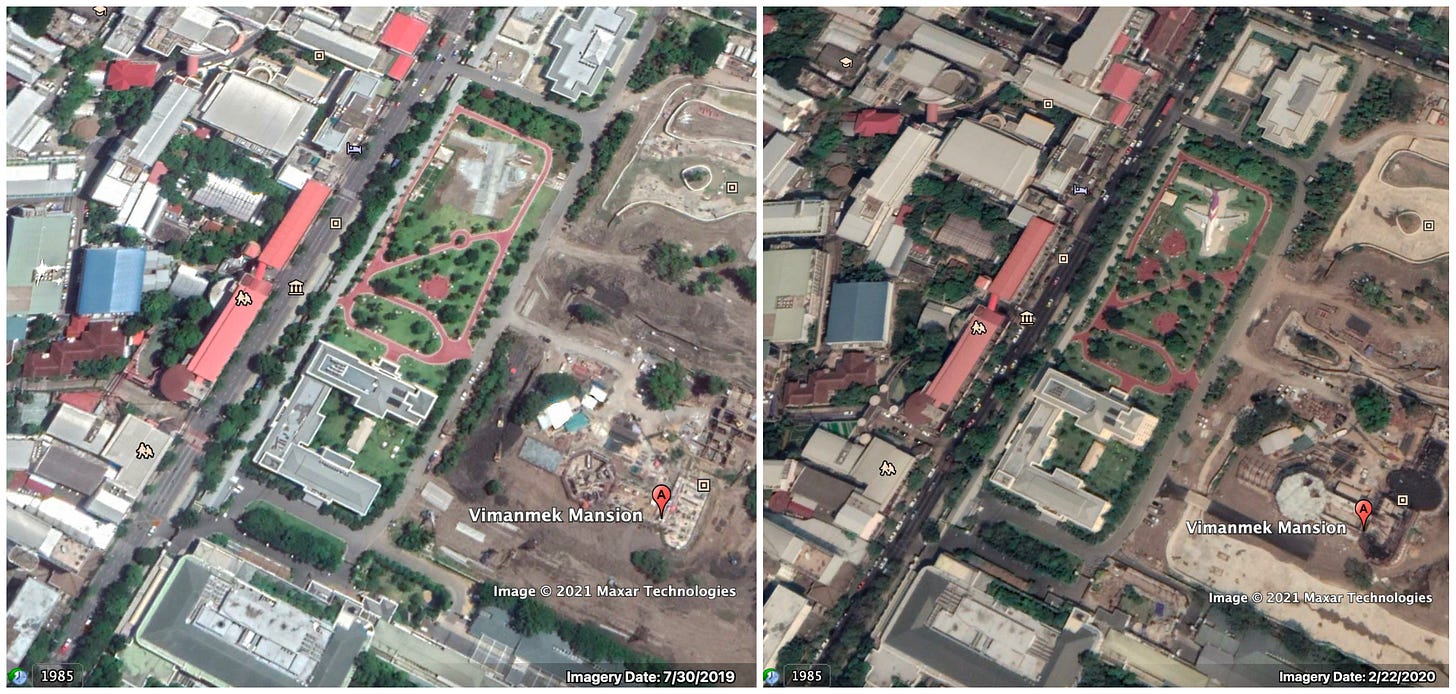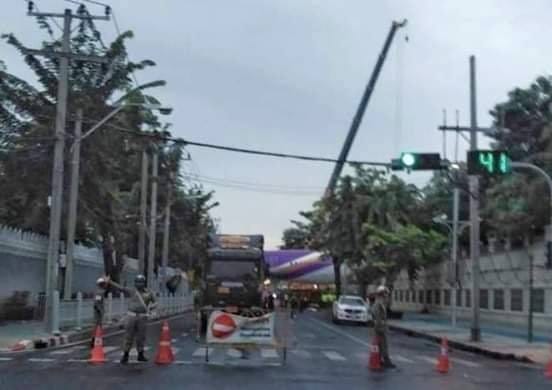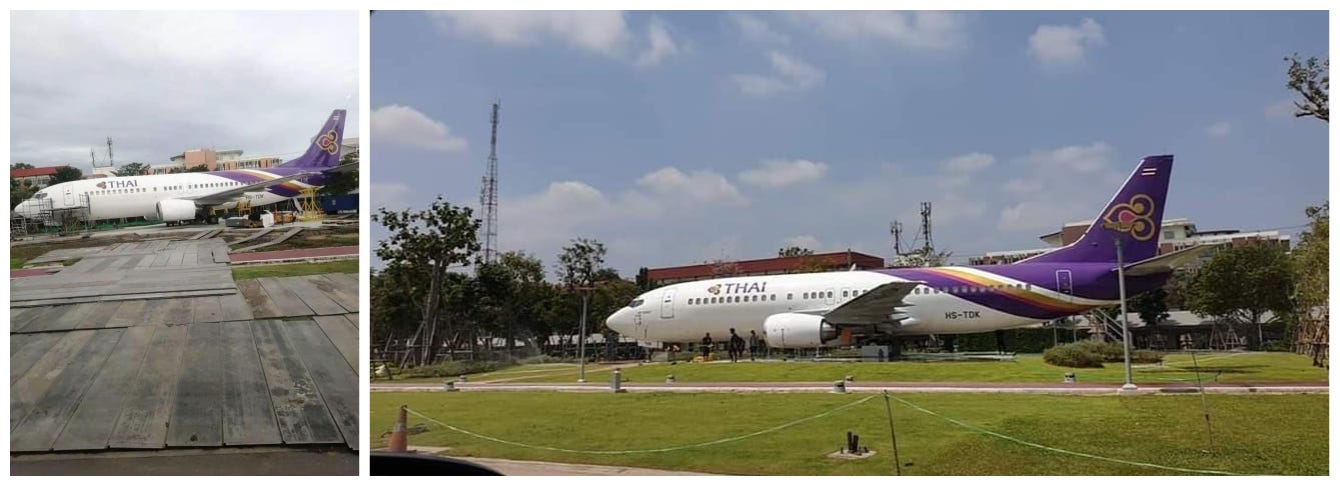The strange story of why King Vajiralongkorn has a Boeing 737 as a garden ornament
Thailand's monarch is constructing a vast palace complex in Bangkok, with nobody to restrain his grandiose plans. The tale of an airliner decorating the palace grounds is particularly revealing
Sometime in the second half of 2019 or early 2020, a Boeing 737 painted in the colours of Thai Airways was parked in the grounds of King Vajiralongkorn’s sprawling Amphorn Sathan Palace complex in the royal district of Bangkok as a garden ornament.
Satellite images show it wasn’t yet there by the end of July 2019, although a space had already been cleared for it. By late February 2020, it had been installed, surrounded by pathways and a manicured garden.
A few months after it appeared in the palace, I was sent a photograph showing the plane’s arrival. The source was not able to confirm the exact date, but it’s clear that getting the Boeing into the palace was a major operation.
Sources also sent me images from within the palace grounds, showing the plane inside the compound. The picture on the left was taken soon after its arrival, with wooden decking on the ground to enable the aircraft to be brought in. The photo on the right is from a few months afterwards, with the decking removed and the lawn looking immaculate once again.
The obvious question is — why? What is a Thai Airways Boeing 737 doing in Vajiralongkorn’s garden?




